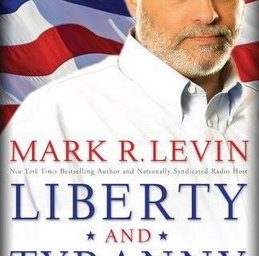Rights Fees Kill Military Models Industry
Lawyers Lay Waste to Military Models Industry (James Dunnigan, StrategyPage)
For over half a century, kits have been sold that enable military history buffs to assemble scale models of military ships, aircraft and vehicles. But that era is coming to an end, as the manufacturers of the original equipment, especially aircraft, are demanding high royalties (up to $40 per kit) from the kit makers. Since most of these kits sell in small quantities (10-20,000) and are priced at $15-30 (for plastic kits, wooden ones are about twice as much), tacking on the royalty just prices the kit out of the market. Popular land vehicles, which would sell a lot of kits, are missing as well. The new U.S. Army Stryker armored vehicles are not available because of royalty requirements. Even World War II aircraft kits are being hit with royalty demands.
These royalty demands grew out of the idea that corporations should maximize ‘intellectual property’ income. Models of a companys products are considered the intellectual property of the owner of a vehicle design. Some intellectual property lawyers have pointed out that many of these demands are on weak legal ground, but the kit manufacturers are often small companies that cannot afford years of litigation to settle this contention. In the past, the model kits were considered free advertising, and good public relations, by the defense firms. The kit manufacturers comprise a small industry, and the aircraft manufacturers will probably not even notice if they put many of the model vendors out of business. Some model companies will survive by only selling models of older (like World War I), or otherwise ‘no royalty’ items (Nazi German aircraft) and ships. But the aircraft were always the bulk of sales, and their loss will cripple many of the kit makers. Some of the vehicle manufacturers have noted the problem, and have lowered their demands to a more reasonable level (a few percent of the wholesale price of the kits).
I must say, this is bizarre. I suppose third parties have no right to make money off of these designs, although one would think that the fact that the design and interest in same were created with taxpayer money would render the image public domain in some sense.
As to the economics of the situation, how stupid can the defense firms be? Having a generation of small kids growing up fantasizing about their planes is a good thing and presumably helps generate support for further development. (For example, according to an NPR report this morning, the Air Force is flying the F-22 Raptor at the Super Bowl in hopes that it will help spark enthusiasm for more procurement.) Furthermore, if they really need the money from these rights fees, one would think they’d be smart enough to ask for an amount commensurate with the value created. If a plastic model sells for $15, it’s obviously not worth $40 for the design alone. Wouldn’t something on the order of 25 cents per model be better than nothing?





What a bunch of freaks. Granted, I grew up with those models, so I’m not exactly disinterested, but……what a bunch of freaks. The amount of money they’d make off royalties is so small, and the damage they’d inflict on the model kit companies is huge.
Here’s hoping the doctrine of laches still has some kick left in it.
This surprised me too because the legal basis for claiming an IP right in the “design” of a military vehicle is extraordinarily weak.
The next generation of military airplane enthusiasts do no impact this quarter’s or this year’s income statement.
on a slight tangent, regarding similar IP issue in chicago…
in the millenium park the designer of many sculptures has insisted that his copyright of the sculpture prevents photography of it, despite being in a public park (millenium park which cost hundreds of millions of taxpayer $) there is currently a lawsuit with a professional photographer
these are even two differnt mediums – 3D art expressed in 2D art!
Presumably that means that taking a photo of such an aircraft in flight and selling the resultant photo is a violation of the intellectual property rights of the designer as well.
Like jpe above, I too grew up assembling model airplanes. I remember putting together the X-15 and the F-111A. The F-111A was my favorite as Revell ensured that the variable geometry wings swung together like the real fighter.
Dave has a good point about photographs. Many air show enthusiasts buy and sell slides of aircraft. The practice is extremely common in England.
Things don’t bode well for hobby shops, First model rocket engines are banned under 9/11. Now models are being forced out. How long until Union Pacific demands a piece of the model train industry?